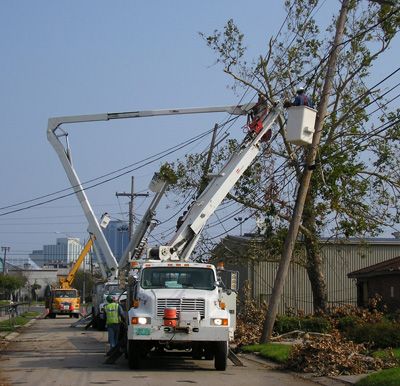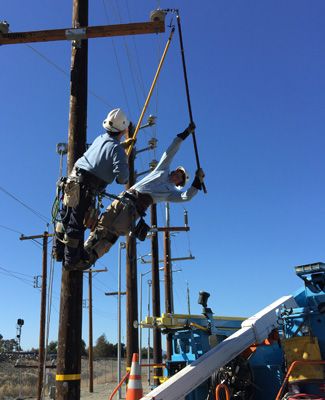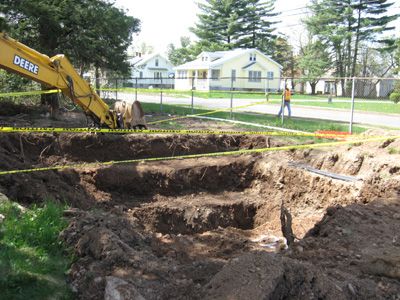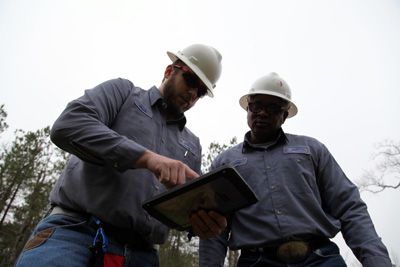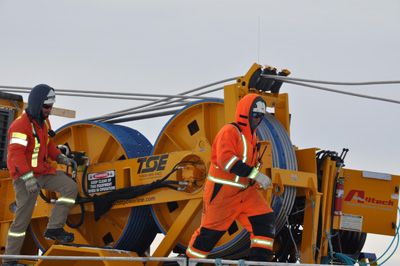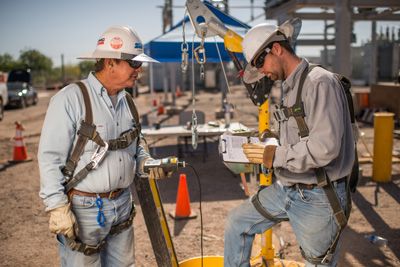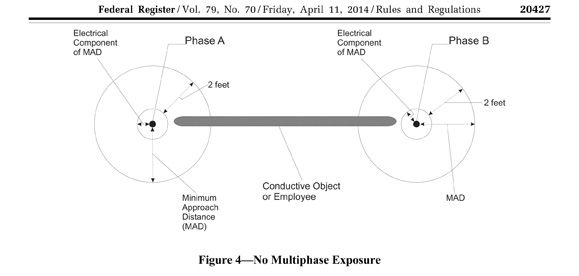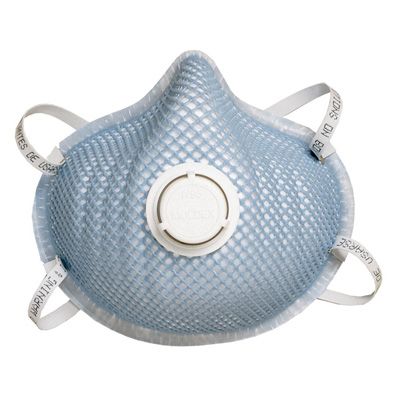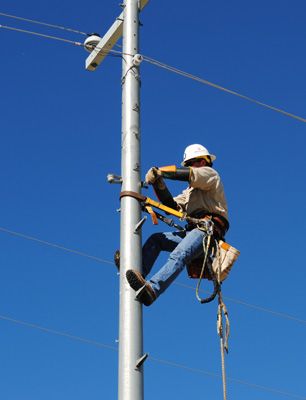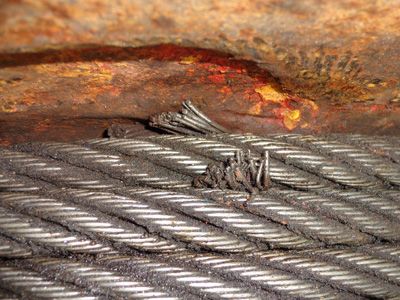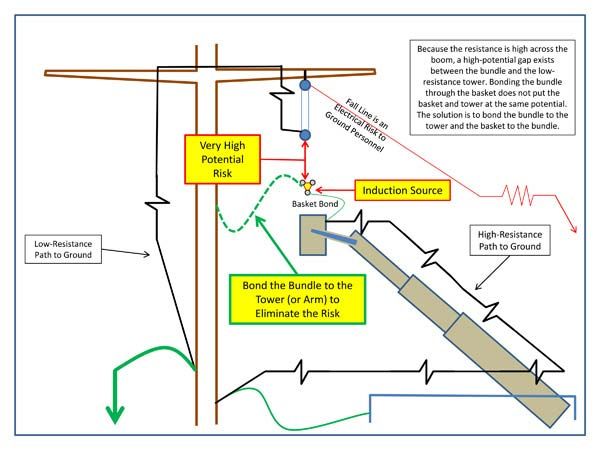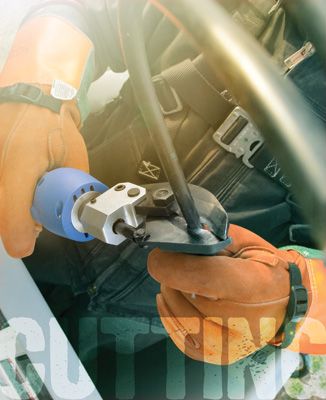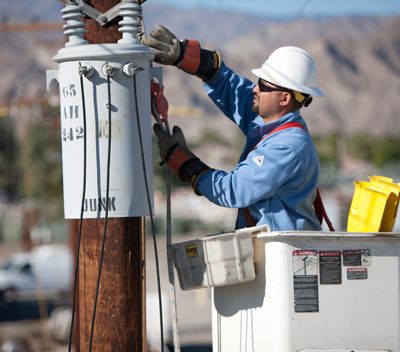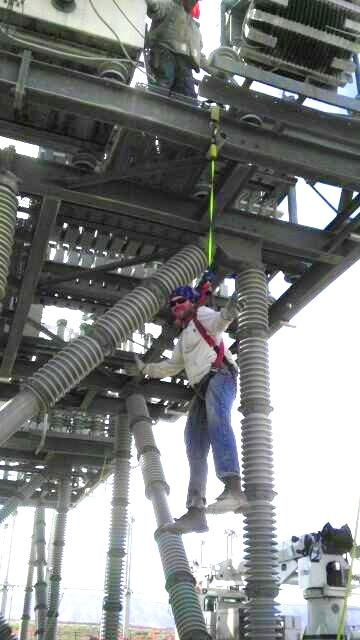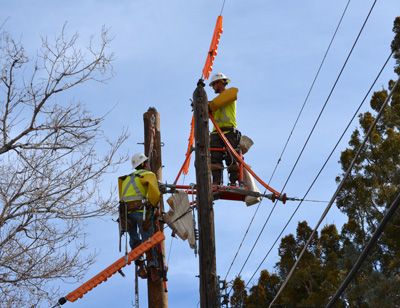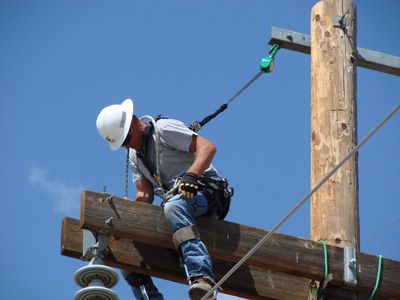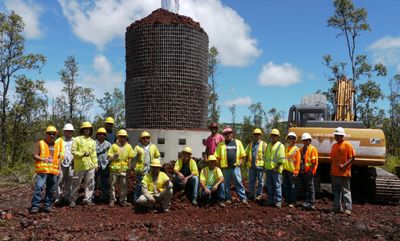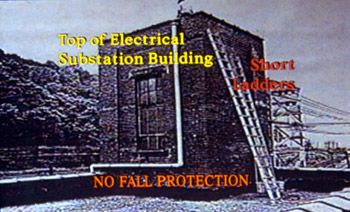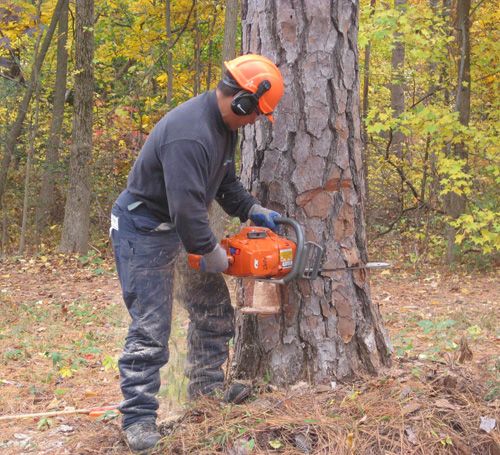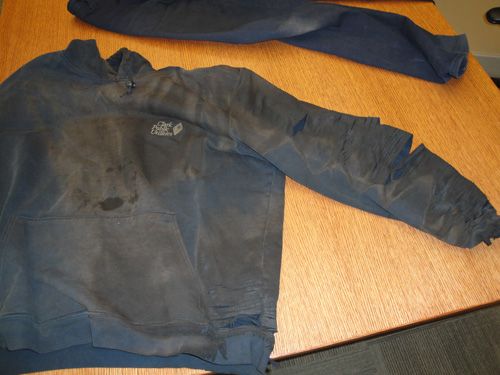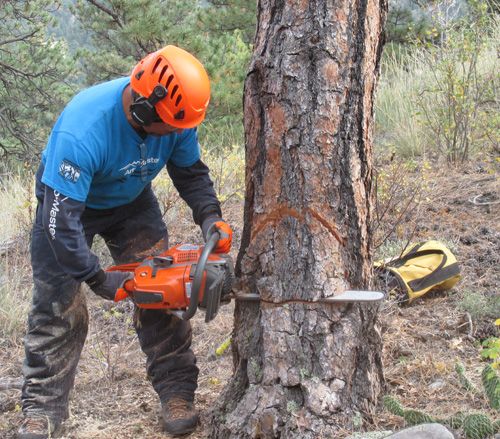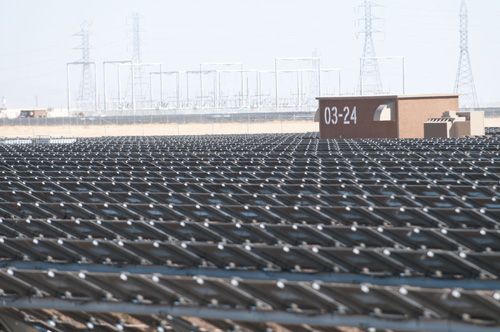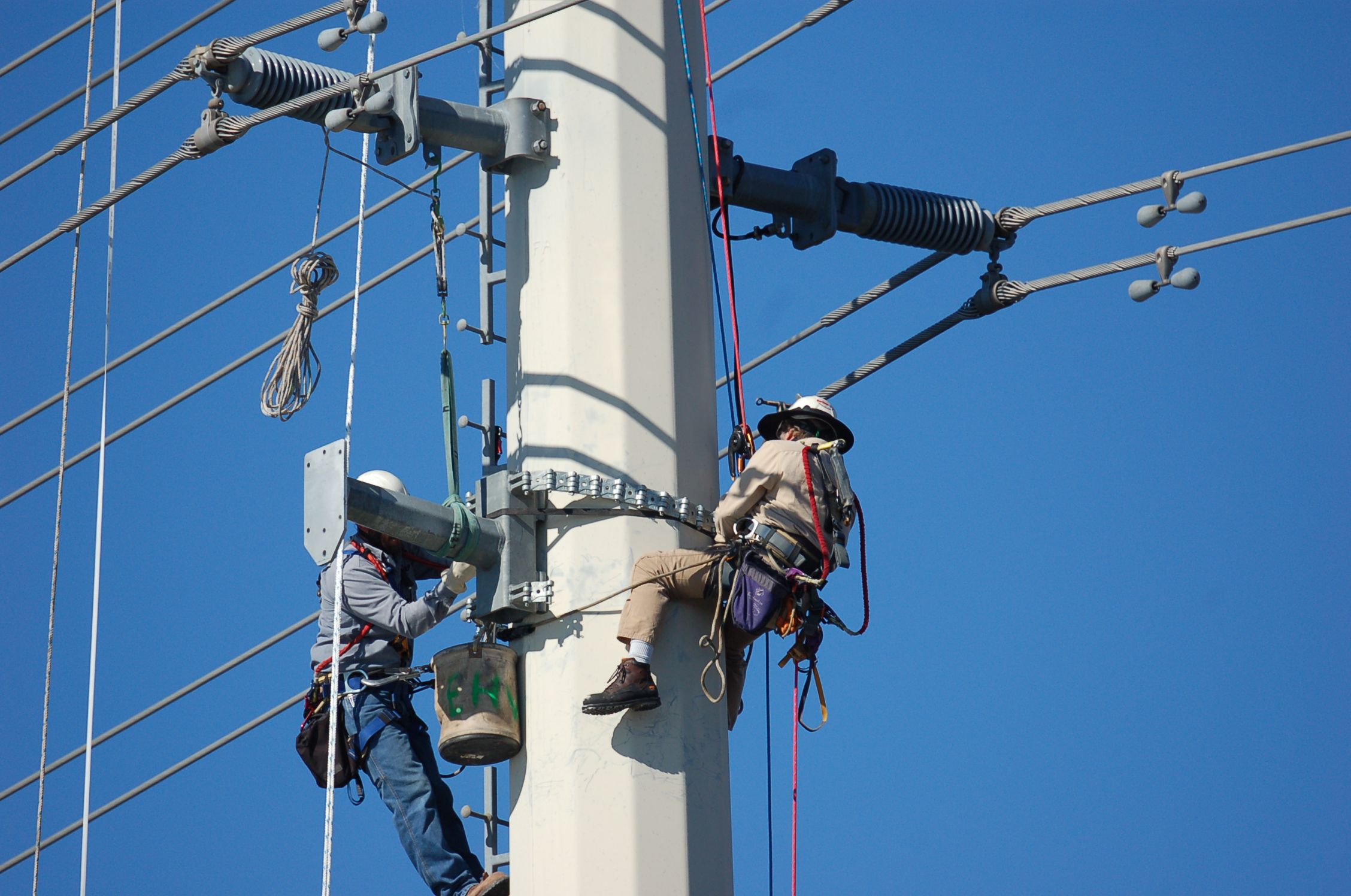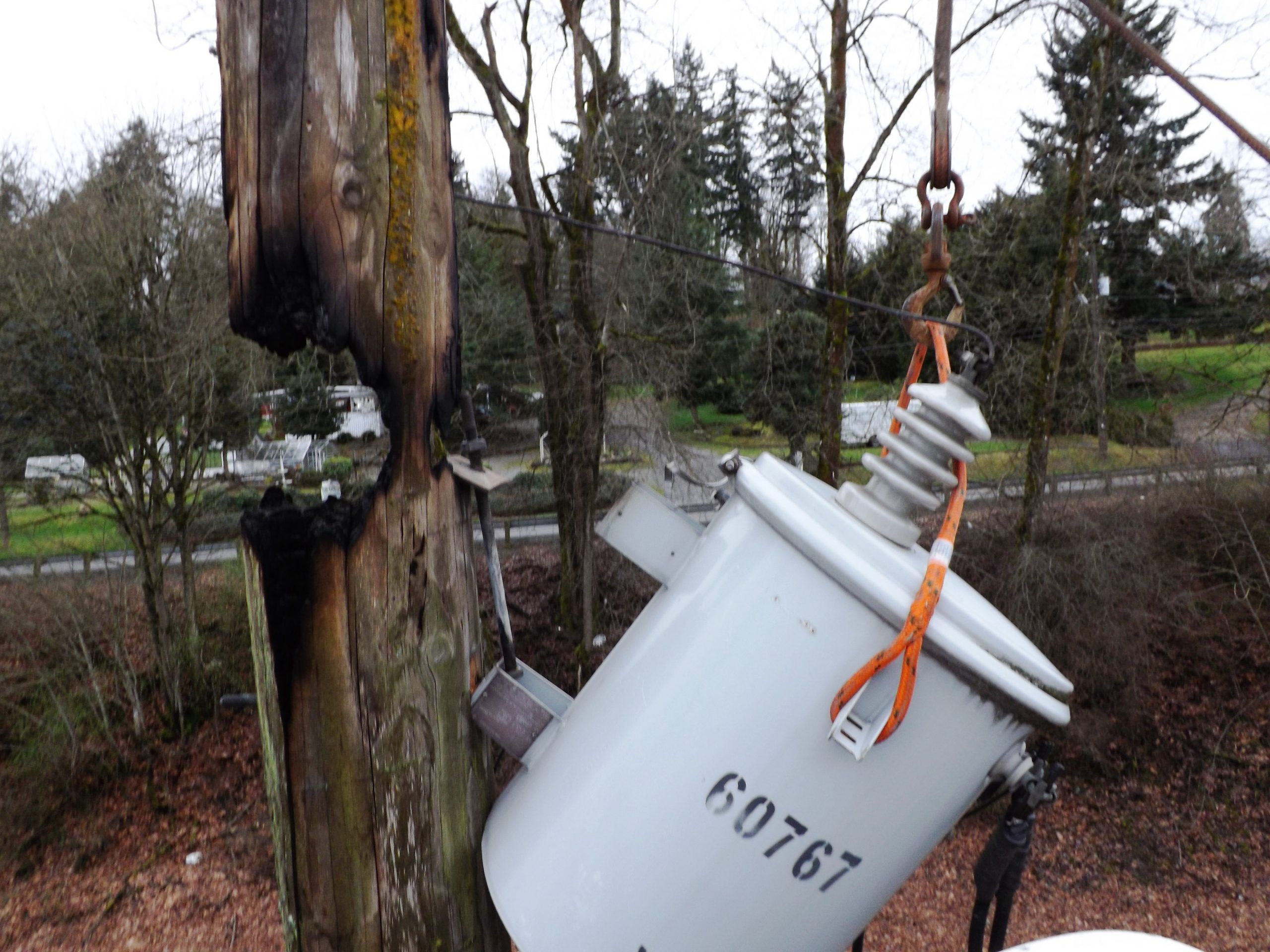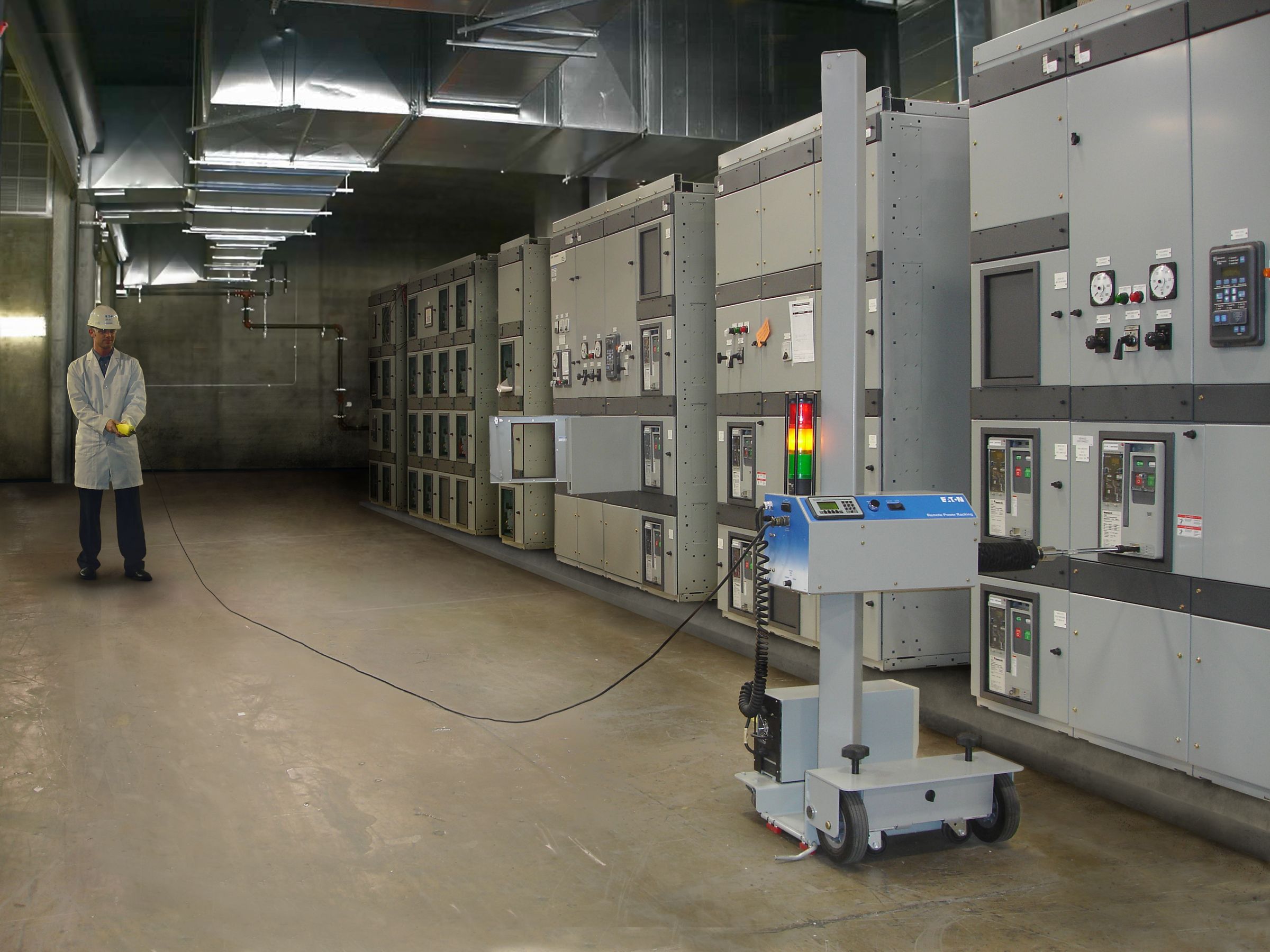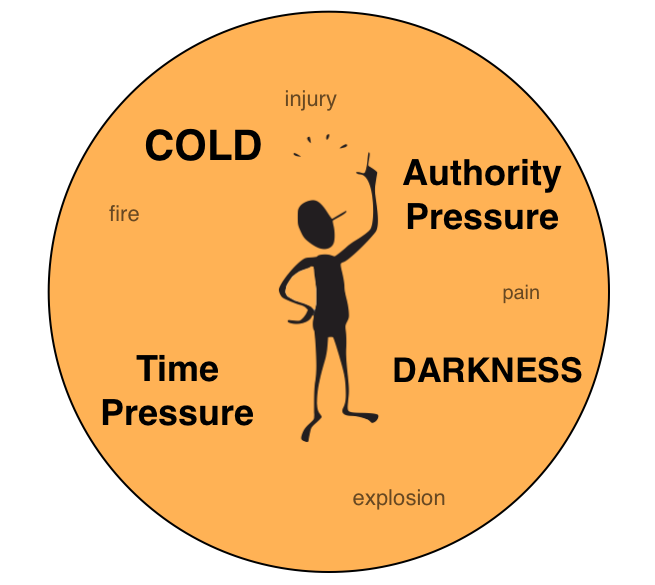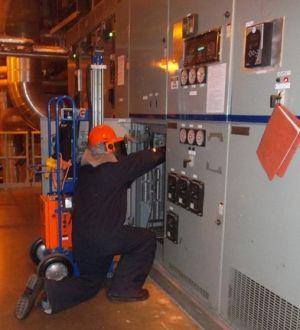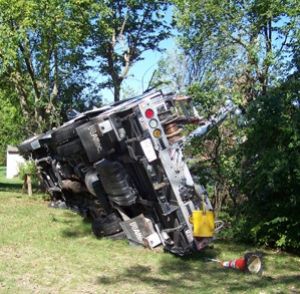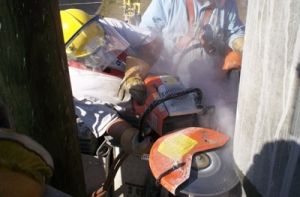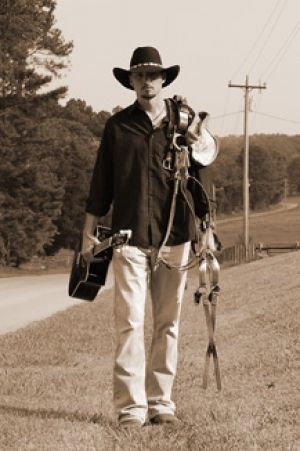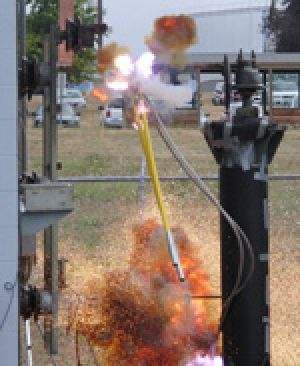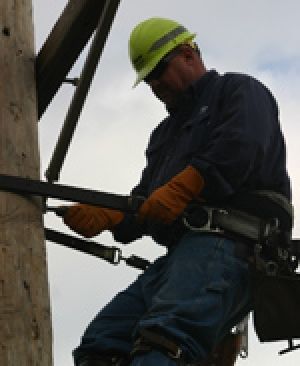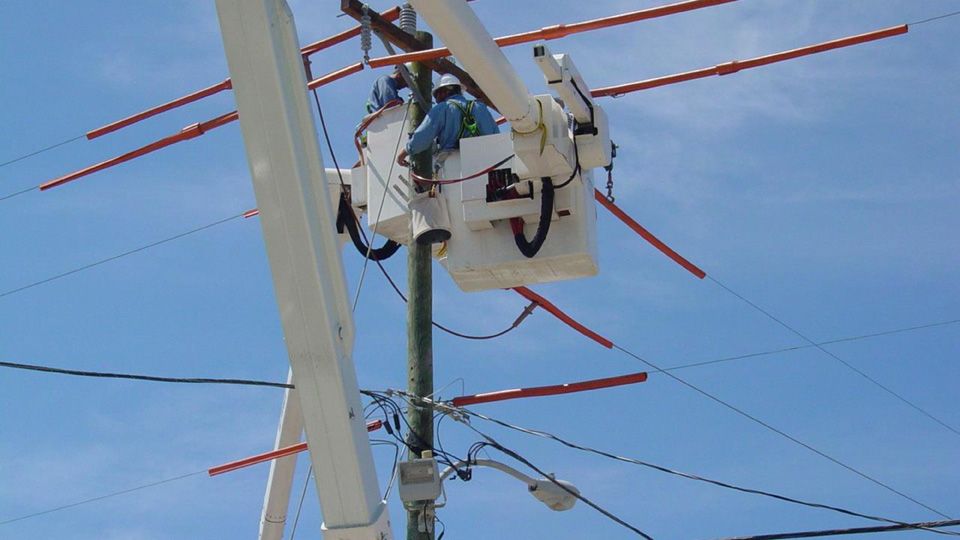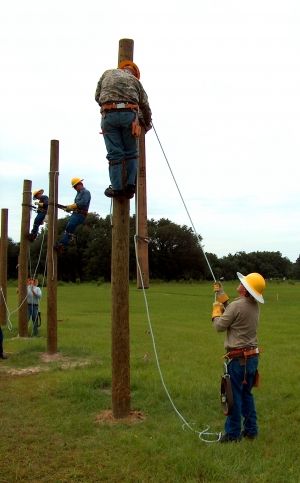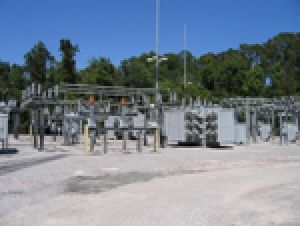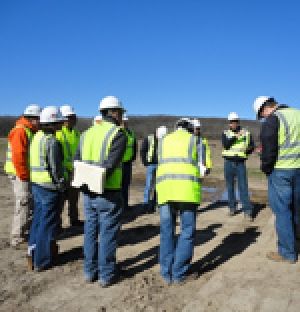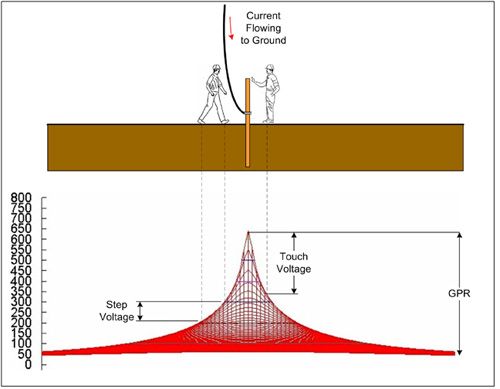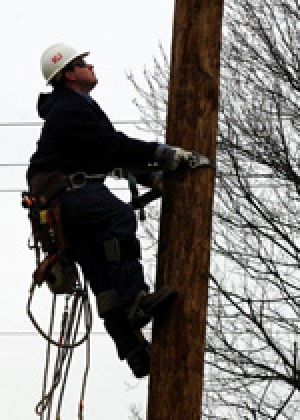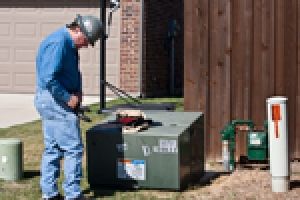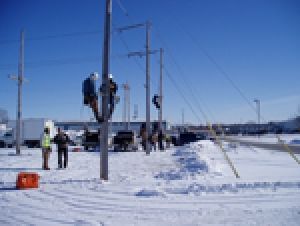Tag: Worksite Safety
The Future of Ergonomics
Written by Raffi Elchemmas, AEP, MBA on . Posted in Safety Management, Worksite Safety.
Train the Trainer 101: Grounding for Stringing in Energized Environments
Written by Jim Vaughn, CUSP on . Posted in Safety Management, Worksite Safety, Train the Trainer 101, Equipment Operations, Grounding.
Voice of Experience: OSHA Citations and Informal Conferences
Written by Danny Raines, CUSP on . Posted in Safety Management, Worksite Safety, Voice of Experience.
April 2016 Q&A
Written by Jim Vaughn, CUSP on . Posted in Safety Management, Worksite Safety, Q & A.
Trenching by the Numbers
Written by Jarred O'Dell, CSP, CUSP on . Posted in Safety Management, Worksite Safety, Equipment Operations.
Understanding Your Safety DNA
Written by Neil Dempster, CSP, MBA, Ph.D. on . Posted in Safety Management, Leadership Development, Worksite Safety.
Best Practices for Arc-Rated Clothing Programs
Written by Hugh Hoagland on . Posted in Safety Management, Worksite Safety.
Auditing for Safety Improvement
Written by Kathy Ellsworth, CUSP, and Pam Tompkins, CSP, CUSP on . Posted in Safety Management, Worksite Safety.
Train the Trainer 101: Safety Cops and the Continuum of Safety
Written by Jim Vaughn, CUSP on . Posted in Safety Management, Leadership Development, Worksite Safety, Tailgate Topics.
Voice of Experience: Hand and Skin Protection for Electric Utility Workers
Written by Danny Raines, CUSP on . Posted in Safety Management, Worksite Safety, Voice of Experience.
February 2016 Q&A
Written by Jim Vaughn, CUSP on . Posted in Safety Management, Worksite Safety, Q & A, Grounding.
Stringing Best Practices: Mesh Grips vs. Preforms
Written by Chris Grajek, CRSP, CUSP on . Posted in Safety Management, Worksite Safety, Equipment Operations.
RF Safety for Utility Workers
Written by Miranda Allen on . Posted in Safety Management, Worksite Safety.
Train the Trainer 101: Practical Underground Safety: Handling Neutrals and Rescue
Written by Jim Vaughn, CUSP on . Posted in Safety Management, Worksite Safety.
Voice of Experience: PPE Regulatory and Consensus Standard Requirements
Written by Danny Raines, CUSP on . Posted in Safety Management, Worksite Safety, Voice of Experience.
December 2015 Q&A
Written by Jim Vaughn, CUSP on . Posted in Safety Management, Worksite Safety, Q & A, Equipment Operations, Grounding.
Fundamentals of Substation Rescue Plans
Written by R. Scott Young, CUSP on . Posted in Safety Management, Worksite Safety.
Investigating Industrial Hygiene at Salt River Project
Written by Randi Korte, CUSP on . Posted in Safety Management, Worksite Safety.
Train the Trainer 101: Practical MAD and Arc Flash Protection
Written by Jim Vaughn, CUSP on . Posted in Safety Management, Worksite Safety.
Voice of Experience: Clearing Up Confusion About 1910.269
Written by Danny Raines, CUSP on . Posted in Safety Management, Worksite Safety, Voice of Experience.
October 2015 Q&A
Written by Jim Vaughn, CUSP on . Posted in Safety Management, Worksite Safety, Grounding.
N95 Filtering Face Pieces: Where Does Your Organization Stand?
Written by Jarred O'Dell, CSP, CUSP on . Posted in Safety Management, Worksite Safety.
Stepping Up Steel Safety Education
Written by Keith Lindemulder on . Posted in Safety Management, Leadership Development, Worksite Safety.
Rigging Fundamentals for Utilities
Written by Brian S. Hope, ASP, CSP, CUSA on . Posted in Safety Management, Worksite Safety, Equipment Operations.
Arc Flash Mitigating Technologies and the OSHA Final Rule
Written by Samy Faried on . Posted in Safety Management, Worksite Safety.
Train the Trainer 101: Practical Personal Protective Grounding
Written by Jim Vaughn, CUSP on . Posted in Safety Management, Worksite Safety, Grounding.
Voice of Experience: Power Generation Safety and the OSHA Update
Written by Danny Raines, CUSP on . Posted in Safety Management, Worksite Safety, Voice of Experience.
August 2015 Q&A
Written by Jim Vaughn, CUSP on . Posted in Safety Management, Worksite Safety.
Making the Switch
Written by Raffi Elchemmas, AEP, MBA on . Posted in Safety Management, Worksite Safety, Equipment Operations.
How to Navigate the FR Clothing Marketplace
Written by Derek Sang, CSHEP, QSSP on . Posted in Safety Management, Worksite Safety.
Arrive Alive
Written by Laura McMillan on . Posted in Safety Management, Worksite Safety, Equipment Operations.
Train the Trainer 101: Back to Basics: ‘Gentlemen, This is a Football’
Written by Jim Vaughn, CUSP on . Posted in Safety Management, Worksite Safety.
June 2015 Q&A
Written by Jim Vaughn, CUSP on . Posted in Safety Management, Worksite Safety, Grounding.
OSHA and the Host-Contractor Relationship
Written by Ted Granger, CSSBB, CUSP on . Posted in Safety Management, Worksite Safety.
The Roller-Coaster Life Cycle of IEEE 1307
Written by Ed Hunt, CUSP on . Posted in Safety Management, Worksite Safety.
Facing Unique Challenges
Written by Kekai Batungbacal, CUSP on . Posted in Safety Management, Leadership Development, Worksite Safety.
Train the Trainer 101: The OSHA-EEI Subpart V Settlement
Written by Jim Vaughn, CUSP on . Posted in Safety Management, Worksite Safety, Equipment Operations.
Voice of Experience: OSHA Updates to Arc-Rated FR Clothing Requirements
Written by Danny Raines, CUSP on . Posted in Safety Management, Worksite Safety, Voice of Experience.
April 2015 Q&A
Written by Jim Vaughn, CUSP on . Posted in Safety Management, Worksite Safety.
The Importance of Matching Evidence Marks in Accident Investigations
Written by Allen L. Clapp, P.E. on . Posted in Safety Management, Worksite Safety.
Measuring, Planning and Cutting Methods for Chainsaw Operators
Written by Ken Palmer on . Posted in Safety Management, Worksite Safety, Equipment Operations.
Recent PPE Changes and 2015 Trends
Written by Hugh Hoagland and Stacy Klausing, M.S. on . Posted in Safety Management, Worksite Safety.
Train the Trainer 101: Addressing Anchorages
Written by Jim Vaughn, CUSP on . Posted in Safety Management, Worksite Safety.
Voice of Experience: The Importance of Job Briefings
Written by Danny Raines, CUSP on . Posted in Safety Management, Worksite Safety, Voice of Experience.
February 2015 Q&A
Written by Jim Vaughn, CUSP on . Posted in Safety Management, Worksite Safety.
Arc Flash and the Benefits of Wearing PPE
Written by Michael J. Getman, CUSP, MBA on . Posted in Safety Management, Worksite Safety.
Closing the Safety Gap
Written by Thomas Arnold, CSP, CUSP on . Posted in Safety Management, Worksite Safety.
Chainsaw Safety, Planning and Precision Felling Techniques
Written by Ken Palmer on . Posted in Safety Management, Worksite Safety, Equipment Operations.
Train the Trainer 101: Substation Entry Policies
Written by Jim Vaughn, CUSP on . Posted in Safety Management, Worksite Safety.
December 2014 Q&A
Written by Jim Vaughn, CUSP on . Posted in Safety Management, Worksite Safety, Grounding.
Photovoltaic Solar Safety Management for Utilities
Written by Jeff Court, CUSP on . Posted in Safety Management, Worksite Safety.
The Risks and Rules of Chainsaw Operation
Written by Ken Palmer on . Posted in Safety Management, Worksite Safety, Equipment Operations.
Train the Trainer 101: Stringing in Energized Environments
Written by Jim Vaughn, CUSP on . Posted in Safety Management, Worksite Safety, Grounding.
Voice of Experience: Flame-Resistant Apparel is Now PPE
Written by Danny Raines, CUSP on . Posted in Safety Management, Worksite Safety, Voice of Experience.
October 2014 Q&A
Written by Jim Vaughn, CUSP on . Posted in Safety Management, Worksite Safety, Equipment Operations.
SRP Rope Access Program Addresses Towers of Power
Written by Randi Korte, CUSP on . Posted in Safety Management, Worksite Safety.
Responding to Pole Fires
Written by Jim Boyd, CUSP, and Craig Lohrey on . Posted in Safety Management, Worksite Safety.
Train the Trainer 101: Fall Protection and the New Rule
Written by Jim Vaughn, CUSP on . Posted in Safety Management, Worksite Safety.
Voice of Experience: OSHA Eye and Face Protection Standards
Written by Danny Raines, CUSP on . Posted in Safety Management, Worksite Safety, Voice of Experience.
August 2014 Q&A
Written by Jim Vaughn, CUSP on . Posted in Safety Management, Worksite Safety, Equipment Operations.
The Final Rule
Written by Jim Vaughn, CUSP on . Posted in Safety Management, Worksite Safety.
NFPA 70E Arc Flash Protection for Nonexempt Industry Workers
Written by Jim Phillips, P.E. on . Posted in Safety Management, Worksite Safety.
June 2014 Q&A
Written by Jim Vaughn, CUSP on . Posted in Worksite Safety.
Voice of Experience: Understanding Enclosed and Confined Spaces
Written by Danny Raines, CUSP on . Posted in Safety Management, Worksite Safety, Voice of Experience.
Accident Analysis Using the Multi-Employer Citation Policy
Written by Allen L. Clapp, P.E. on . Posted in Safety Management, Worksite Safety, Tailgate Topics.
Understanding and Influencing the ‘Bulletproof’ Employee
Written by Phillip Ragain on . Posted in Safety Management, Leadership Development, Worksite Safety.
Electrical Safety for Utility Generation Operations Personnel: A Practical Approach
Written by Randy Fabry and Pam Tompkins, CSP, CUSP on . Posted in Safety Management, Worksite Safety, Equipment Operations.
Fact-Finding Techniques for Incident Investigations
Written by Ron Joseph, CUSP on . Posted in Safety Management, Worksite Safety.
What OSHA’s Proposed Silica Rule Means to You
Written by Matt Edmonds, CUSP, CHST, CET on . Posted in Safety Management, Worksite Safety.
The Singing Lineman
Written by Loralee Pearson on . Posted in Worksite Safety.
Voice of Experience: Working On or Near Exposed Energized Parts
Written by Danny Raines, CUSP on . Posted in Worksite Safety, Voice of Experience.
Are Your Temporary Protective Grounds Really Protecting You?
Written by Marcia L. Eblen and Rick Kennerly on . Posted in Worksite Safety, Grounding.
Ergonomics for Lineworkers
Written by Steve Hedden, CUSP on . Posted in Safety Management, Worksite Safety.
Voice of Experience: Incidents and the Failure to Control Work
Written by Danny Raines, CUSP on . Posted in Worksite Safety, Voice of Experience.
Starting From the Ground Up
Written by John Morton, CUSP on . Posted in Worksite Safety.
Safety Awareness for Substations
Written by R. Scott Young, CUSP on . Posted in Worksite Safety.
Occupational Dog Bite Prevention & Safety
Written by Ron Joseph, CUSP on . Posted in Worksite Safety.
NESC and ANSI Z535 Safety Sign Standards for Electric Utility Power Plants and Substations
Written by Allen L. Clapp, P.E. on . Posted in Worksite Safety.
Public Safety and Our First Responders
Written by George R. Popovici, CUSA, CUSP on . Posted in Worksite Safety.
Implementing a Zero Injury Program
Written by Joseph Saccaro, CSP, CUSA, CUSP, OHST on . Posted in Worksite Safety.
Detecting Shock Hazards at Transmission Line Work Sites
Written by Gary Zevenbergen on . Posted in Worksite Safety, Tailgate Topics.
Train the Trainer 101: Enclosed Space Rescue
Written by Jim Vaughn, CUSP on . Posted in Worksite Safety.
Train the Trainer 101: Ferroresonance Explained
Written by Jim Vaughn, CUSP on . Posted in Worksite Safety.
Keys to Effective Fall Protection
Written by Mike Woods, CUSP on . Posted in Worksite Safety.
Safety Rules and Work Practices: Why Don’t They Match Up?
Written by Jeremy Adcock and Pam Tompkins, CSP, CUSP on . Posted in Safety Management, Worksite Safety.
Working in Winter
Written by Amber Reed on . Posted in Worksite Safety.
100 Percent Fall Protection: A Joint Union-Management Effort
Written by Kevin J. Severson, CUSA on . Posted in Worksite Safety.
ATV Safety Begins with Proper Training
Written by Todd Horning on . Posted in Worksite Safety.
Arc Suppression Blanket Installation
Written by Victor L. Petrovic, Ph.D. on . Posted in Worksite Safety.
What Do We Do About Arc Hazard?
Written by Jim Vaughn, CUSP on . Posted in Worksite Safety.
What You Need to Know About Substations
Written by Jim Vaughn, CUSP on . Posted in Worksite Safety.
Tower Rescue Pre-planning Pays Off
Written by Jim Vaughn, CUSP on . Posted in Worksite Safety.
4 Rules to Live By
Written by Danny Raines, CUSP on . Posted in Worksite Safety, Grounding.
Notes From the Underground
Written by Jim Vaughn, CUSP on . Posted in Worksite Safety.
Why Single-Point Grounding Works
Written by Jim Vaughn, CUSP on . Posted in Worksite Safety, Grounding.


